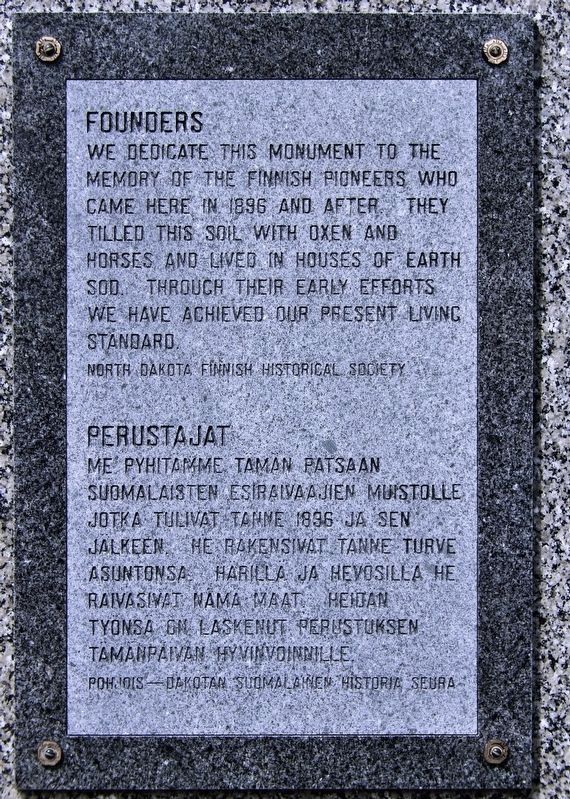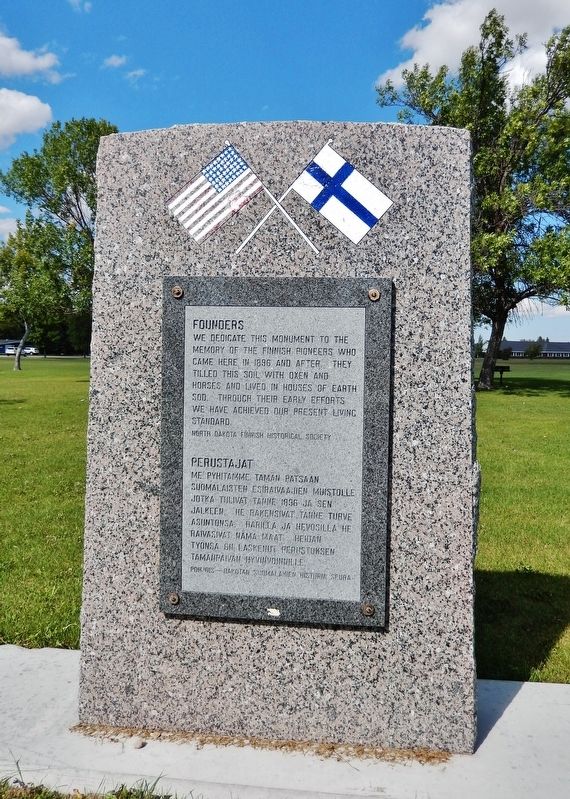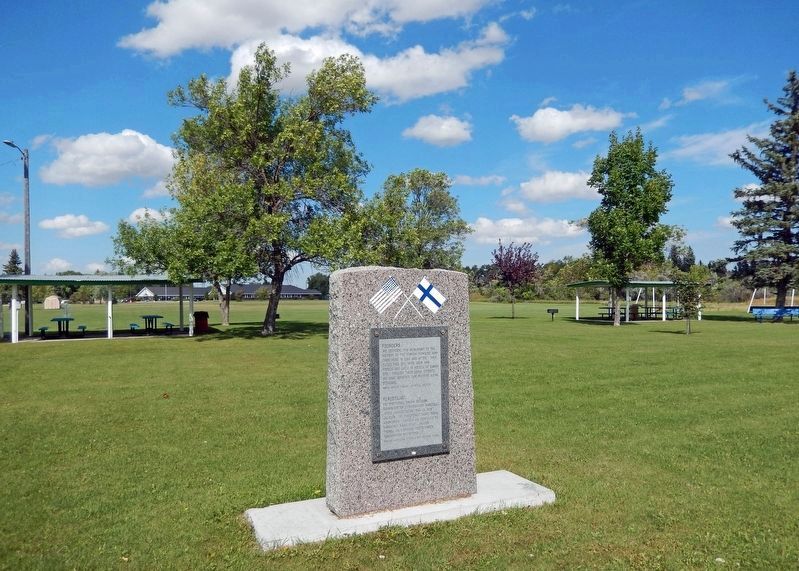Rolla in Rolette County, North Dakota — The American Midwest (Upper Plains)
Finnish Pioneer Monument
We dedicate this monument to the memory of the Finnish pioneers who came here in 1896 and after. They tilled this soil with oxen and horses and lived in houses of earth sod. Through their early efforts we have achieved our present living standard.
North Dakota Finnish Historical Society
[Finnish] Perustajat
Me pyhitamme tämän patsaan suomalaisten esiraivaajien muistolle jotka tuliivat tänne 1896 ja sen jälkeen. He rakensivat tänne turve asuntonsa, harilla ja hevosilla he raivasivat nama maat. Heidan tyonsa on laskenut perustuksen tamanpaivan hyvinvoinnille.
Pohjois — Dakotan Suomalainen Historia Seura
Erected by North Dakota Finnish Historical Society.
Topics. This historical marker and monument is listed in these topic lists: Agriculture • Immigration • Settlements & Settlers. A significant historical year for this entry is 1896.
Location. 48° 51.825′ N, 99° 36.563′ W. Marker is in Rolla, North Dakota, in Rolette County . Marker is on 5th Avenue Northeast just east of 6th Street Northeast, on the left when traveling east. Marker is located just west of the swimming pool in Rolla Community Park. Touch for map. Marker is at or near this postal address: 101 5th Avenue Northeast, Rolla ND 58367, United States of America. Touch for directions.
Also see . . . History of Rolla, North Dakota Finnish Settlement (PDF). Excerpt:
The first job facing the homesteaders was building sod houses for themselves. This sod was plowed primarily from the lowlands or near the marshes where it grew the thickest. From the strips of sod were cut the sections, usually about 26 inches in length, and, after being piled in a buckboard wagon, these were hauled by horse-team to the construction site. The layers were stacked until the desired height was reached and then the crossbeam was raised. Sections of tarpaper were nailed to this for roofing, a layer of hay was spread on the tarpaper, and finally the hay was covered with a layer of sod. The house was now water resistant, and ready for occupancy. The next big job was clearing the fields. This toilsome job was hampered much by the large number of rocks that were dug up. For this, the farmers carried a steel bar on their plows so that while their horse or ox team rested, the men went to twist and dig out the rocks. When these had been cleared from the fields, and the plowing had been finished, began the sowing of the wheat, barley and flax.(Submitted on September 3, 2023, by Cosmos Mariner of Cape Canaveral, Florida.)
Credits. This page was last revised on September 3, 2023. It was originally submitted on September 3, 2023, by Cosmos Mariner of Cape Canaveral, Florida. This page has been viewed 52 times since then and 9 times this year. Photos: 1, 2, 3. submitted on September 3, 2023, by Cosmos Mariner of Cape Canaveral, Florida.


